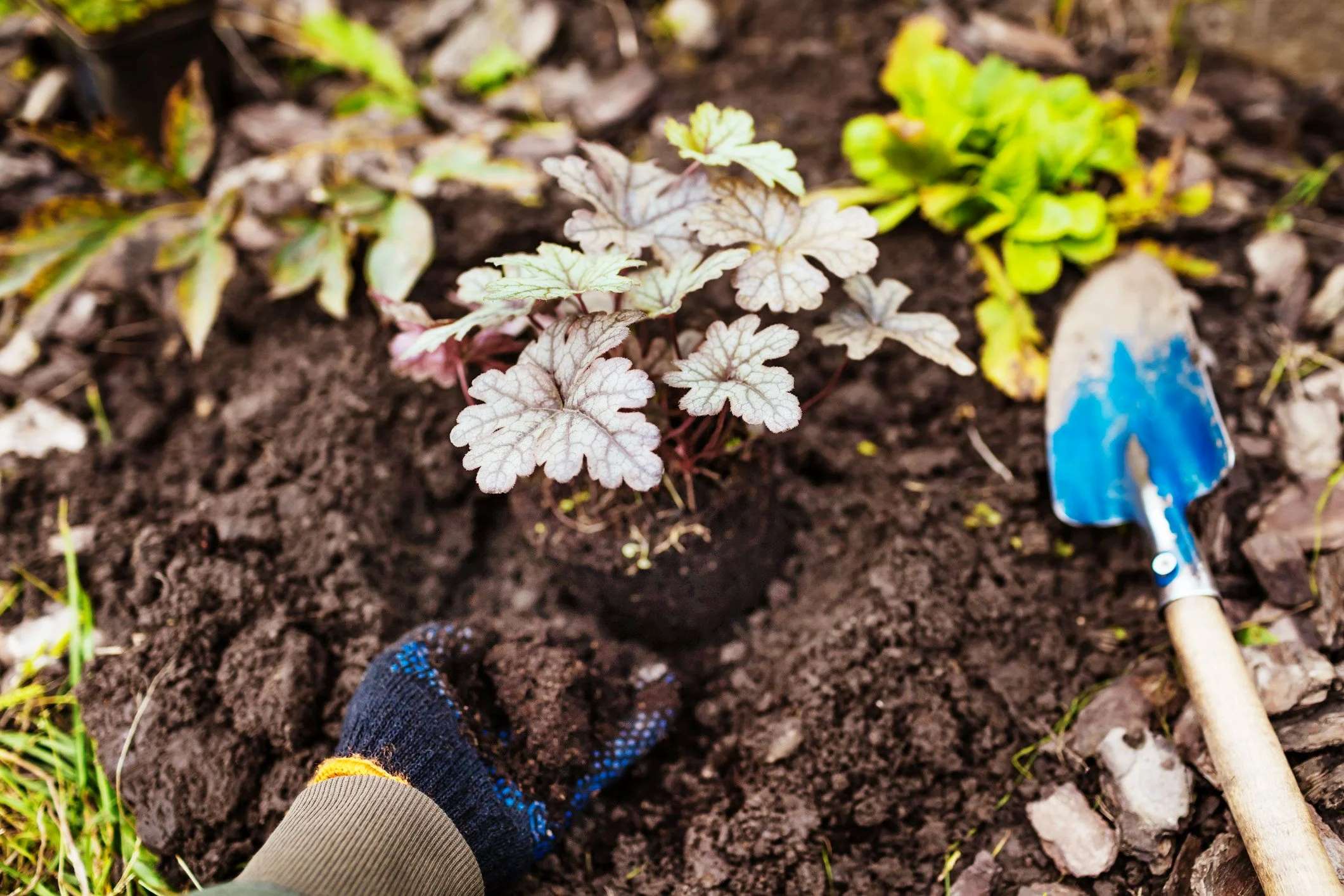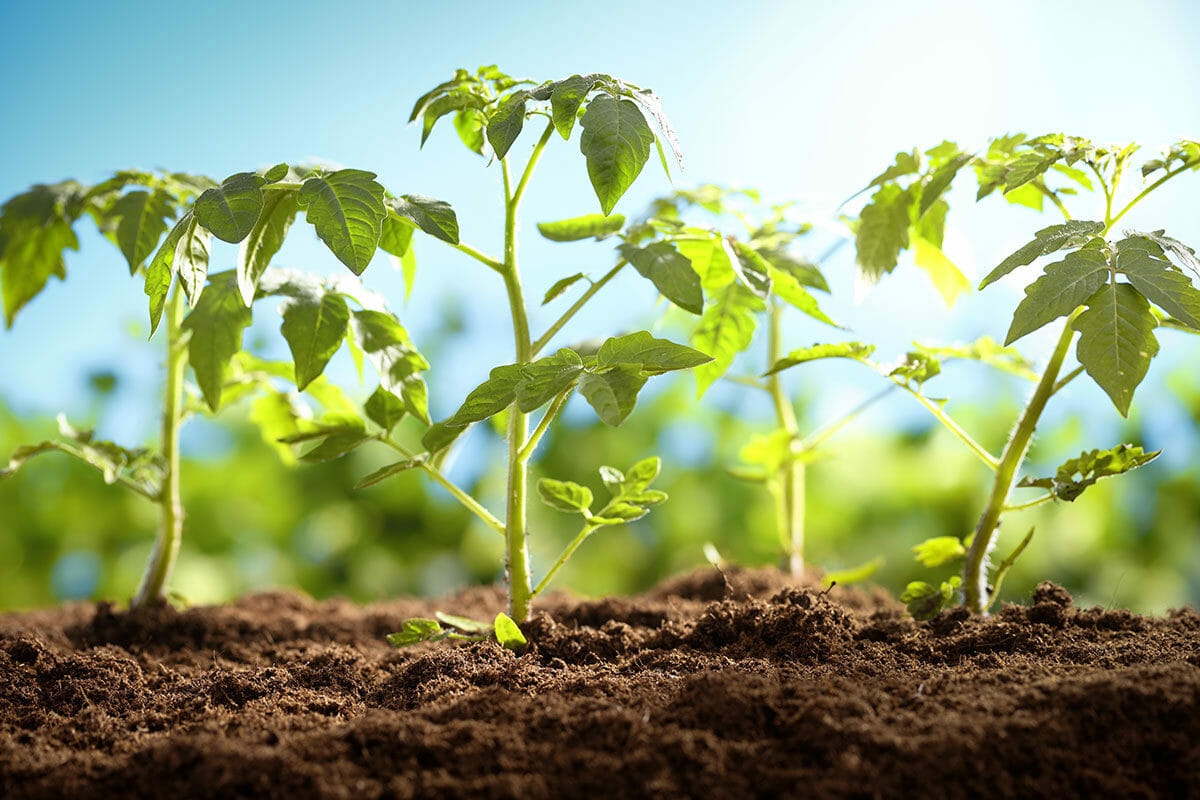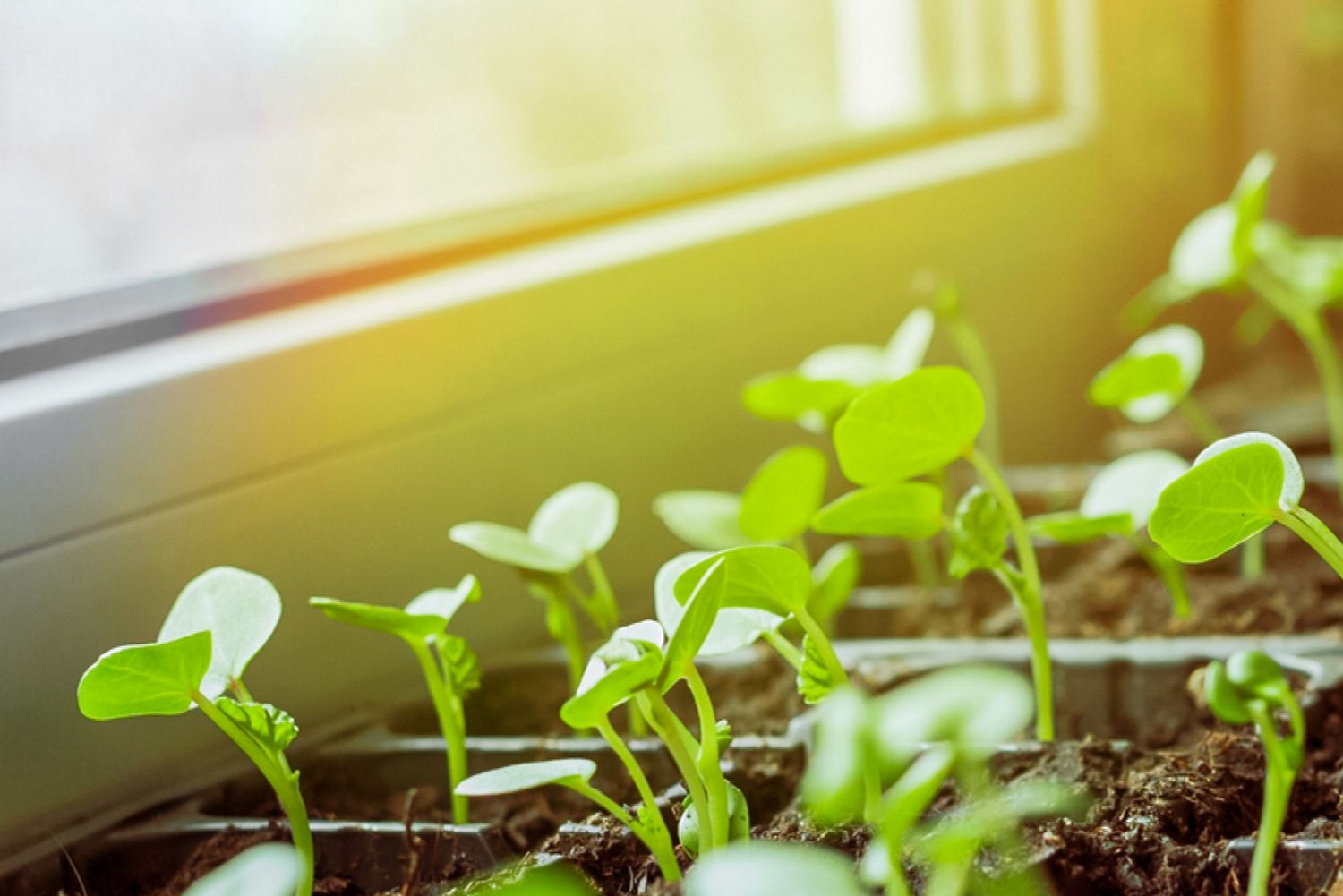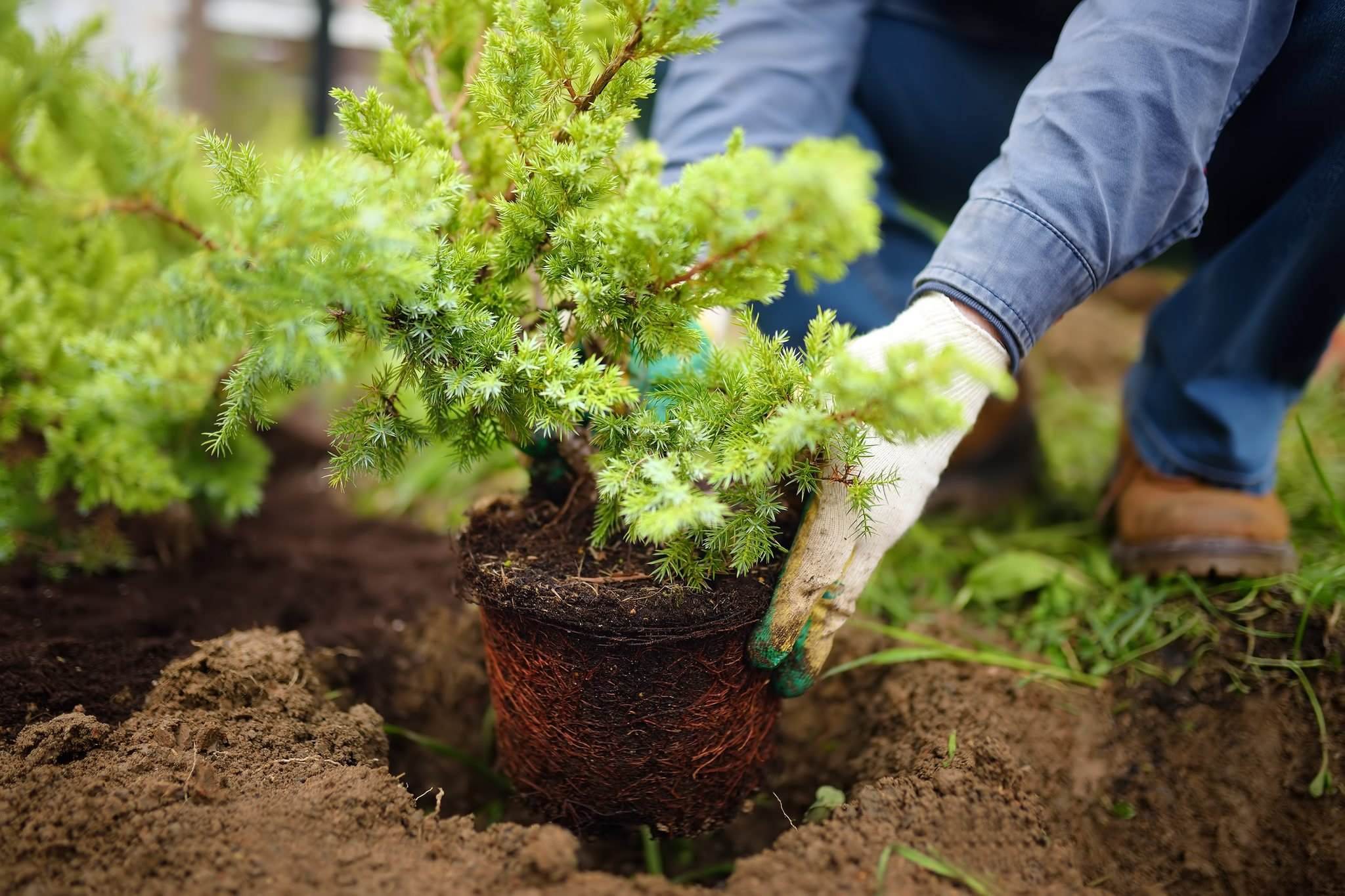Home>Types of Gardening>Edible Gardening>When Can You Put Seedlings Outside


Edible Gardening
When Can You Put Seedlings Outside
Published: January 2, 2024
Discover the ideal time for transitioning your edible garden seedlings outdoors. Learn when to safely plant your seedlings and ensure a successful harvest.
(Many of the links in this article redirect to a specific reviewed product. Your purchase of these products through affiliate links helps to generate commission for Chicagolandgardening.com, at no extra cost. Learn more)
Table of Contents
Introduction
Embarking on the journey of edible gardening is a fulfilling endeavor that not only nurtures the body with fresh, homegrown produce but also nourishes the soul with the therapeutic joy of cultivating life. As you delve into the realm of gardening, the process of nurturing seedlings into robust plants becomes a pivotal stage in the cycle of growth. Understanding the optimal time to transition seedlings from the sheltered environment of indoor sowing to the outdoor expanse is crucial for their successful acclimatization and sustained development.
In the subsequent sections, we will explore the intricacies of seedling development, the influence of climate on their growth, the significance of frost dates, the essential practice of hardening off, and the art of discerning the opportune moment to introduce seedlings to the great outdoors. By delving into these facets, you will gain a comprehensive understanding of when to put seedlings outside, empowering you to nurture thriving plants that yield a bountiful harvest.
Let's embark on this enlightening journey, delving into the nuances of seedling care and the art of harmonizing their transition to the outdoor realm.
Understanding Seedling Development
Seedling development marks the early stage of a plant’s life, characterized by delicate shoots emerging from seeds and gradually maturing into young plants. During this phase, seedlings are particularly vulnerable to environmental stressors, requiring optimal conditions to flourish. When nurturing seedlings indoors, they benefit from the controlled environment, shielded from harsh weather elements and potential pests. This protective setting fosters their initial growth, allowing them to establish sturdy roots and develop resilient stems and leaves.
As seedlings mature, they undergo a transformative process, building strength and resilience to prepare for their eventual transition to the outdoor environment. Understanding the key stages of seedling development, from germination to the emergence of true leaves, provides valuable insight into their readiness for outdoor exposure. By closely monitoring their growth and assessing their overall vigor, gardeners can gauge the optimal timing for relocating seedlings to the outdoor garden beds or containers.
Moreover, recognizing the unique characteristics of different plant species is essential, as each variety may exhibit distinct growth patterns and environmental requirements. Some seedlings thrive in cooler temperatures, while others flourish in warmer climates. By delving into the specific needs of the plant species in question, gardeners can tailor their care and transition strategies to suit the individual requirements of each type of seedling.
With a deeper understanding of seedling development, including the nuances of their growth stages and the diverse needs of various plant species, you are better equipped to navigate the intricacies of nurturing and transitioning seedlings for optimal outdoor growth.
Climate Considerations
When contemplating the transition of seedlings from indoor shelter to the outdoor environment, the prevailing climate plays a pivotal role in determining the opportune moment for this significant shift. The regional climate, encompassing factors such as temperature, humidity, and sunlight exposure, profoundly influences the growth trajectory of seedlings. Understanding the specific climatic conditions in your area enables you to make informed decisions regarding the timing of relocating seedlings to the outdoor garden space.
Temperature variations exert a profound impact on seedling development, as fluctuations can either foster robust growth or pose a risk of stress and stunted progress. Assessing the average temperatures and identifying potential fluctuations in your local climate aids in gauging the suitability of outdoor conditions for the delicate seedlings. Additionally, the duration of sunlight exposure and the intensity of UV rays are critical considerations, as they directly impact the photosynthetic processes essential for the seedlings’ vitality.
Humidity levels also warrant careful attention, as excessively dry or humid conditions can impede the seedlings’ growth and render them susceptible to diseases. By evaluating the prevailing humidity patterns in your region, you can proactively implement measures to mitigate potential moisture-related challenges and create an environment conducive to the thriving of young plants.
Furthermore, the presence of microclimates within your gardening space merits consideration, as certain areas may experience unique temperature and moisture dynamics. By identifying and understanding these microclimates, you can strategically position your seedlings to optimize their exposure to favorable environmental conditions, thereby enhancing their prospects for robust growth and resilience.
By conscientiously assessing the climate considerations that encompass temperature variations, sunlight exposure, humidity levels, and microclimatic nuances, you can adeptly navigate the process of transitioning seedlings to the outdoor realm, ensuring their successful acclimatization and sustained flourishing.
Frost Dates
Understanding the frost dates specific to your region is instrumental in orchestrating the seamless transition of seedlings from the sheltered confines of indoor environments to the outdoor expanse. Frost dates delineate the temporal boundaries within which the risk of frost occurrence is prevalent, serving as a crucial reference point for determining the safe timing of introducing tender seedlings to the open garden space.
By consulting the local agricultural extension office or utilizing online resources, you can ascertain the average dates of the last spring frost and the first autumn frost in your area. Armed with this invaluable knowledge, you can strategically plan the outdoor debut of your seedlings, safeguarding them from the peril of untimely frosts that could compromise their delicate constitution.
For instance, in regions characterized by a short growing season, the knowledge of frost dates assumes heightened significance, as it dictates the window of opportunity for nurturing and harvesting crops. By aligning the timing of seedling transplantation with the cessation of frost risk, gardeners can optimize the growth potential of their plants, setting the stage for a productive and flourishing harvest.
Conversely, in milder climates where frost occurrences are less pronounced, understanding the historical frost patterns remains essential, as unexpected late-season frosts can pose a threat to tender seedlings. By heeding the guidance offered by frost dates, gardeners can proactively shield their seedlings from the perils of frost, fostering an environment conducive to their robust development and sustained vitality.
Thus, by conscientiously acknowledging the significance of frost dates and leveraging this knowledge to inform the timing of seedling relocation, gardeners can safeguard their young plants from the detrimental impact of untimely frosts, nurturing an environment that nurtures their thriving growth.
Hardening Off
Hardening off is a pivotal preparatory phase that precedes the relocation of seedlings from indoor settings to the outdoor environment, serving as a crucial bridge between the sheltered conditions of indoor cultivation and the rigors of the external garden space. This gradual acclimatization process equips the seedlings with the resilience necessary to withstand the environmental nuances and fluctuations they will encounter outdoors.
The hardening off process entails gradually exposing the seedlings to outdoor conditions, such as fluctuating temperatures, gentle breezes, and natural sunlight, over a span of one to two weeks. By initiating this gradual transition, gardeners enable the seedlings to fortify their cellular structure, adapt to varying light intensities, and develop thicker cuticles, all of which are essential for their resilience in the outdoor environment.
During the hardening off period, it is imperative to commence with brief outdoor excursions, gradually extending the duration and intensity of exposure as the seedlings acclimate to the external elements. Shielding the seedlings from harsh midday sun and gusty winds during the initial stages of hardening off mitigates the risk of stress and sunburn, ensuring a smooth transition that nurtures their robust growth.
Moreover, maintaining a vigilant eye on the weather forecasts and heeding the guidance offered by frost dates is essential during the hardening off phase, as safeguarding the seedlings from potential frost occurrences is paramount. By judiciously orchestrating the hardening off process, gardeners empower their seedlings to thrive in the outdoor realm, poised to embrace the natural elements with resilience and vigor.
Choosing the Right Time
Discerning the opportune moment to introduce seedlings to the outdoor expanse hinges upon a confluence of factors, encompassing the developmental stage of the seedlings, the prevailing climate, and the guidance offered by frost dates. By astutely considering these elements, gardeners can pinpoint the optimal time for transitioning their seedlings, setting the stage for robust growth and resilience in the outdoor environment.
Assessing the developmental stage of the seedlings is paramount, as it provides valuable insights into their readiness for outdoor relocation. Once the seedlings have developed sturdy stems, well-defined leaves, and a robust root system, they are better equipped to withstand the rigors of outdoor exposure. The emergence of true leaves, distinct from the initial seed leaves, signifies a critical developmental milestone, indicating the seedlings’ readiness for the transition.
Concurrently, aligning the timing of seedling relocation with the guidance offered by frost dates is instrumental in safeguarding the delicate plants from the perils of untimely frosts. By coordinating the outdoor debut of the seedlings with the cessation of frost risk, gardeners mitigate the potential harm posed by unexpected cold snaps, nurturing an environment conducive to the sustained flourishing of their plants.
Furthermore, attuning to the prevailing climate and its nuanced dynamics, including temperature variations, sunlight exposure, and humidity levels, informs the decision-making process. By leveraging a comprehensive understanding of the local climate, gardeners can adeptly time the transition of their seedlings, ensuring that the outdoor conditions are conducive to their robust growth and vitality.
By harmonizing the developmental readiness of the seedlings, the guidance offered by frost dates, and the unique climatic considerations, gardeners can discern the right time to introduce their seedlings to the outdoor realm, fostering an environment that nurtures their flourishing and resilience.
Conclusion
Embarking on the journey of nurturing seedlings into thriving plants entails a delicate orchestration of developmental awareness, climatic acumen, and strategic timing. By delving into the intricacies of seedling development, recognizing the influence of climate on their growth trajectory, heeding the guidance offered by frost dates, and conscientiously implementing the hardening off process, gardeners can adeptly discern the opportune moment to introduce their tender seedlings to the outdoor expanse.
Understanding the unique growth patterns of different plant species and the pivotal developmental milestones, such as the emergence of true leaves, empowers gardeners to gauge the readiness of their seedlings for the transition. Concurrently, attuning to the prevailing climate and its nuanced dynamics, including temperature variations, sunlight exposure, and humidity levels, informs the decision-making process, ensuring that the outdoor conditions are conducive to the robust growth and sustained vitality of the seedlings.
By harmonizing the developmental readiness of the seedlings, the guidance offered by frost dates, and the unique climatic considerations, gardeners can discern the right time to introduce their seedlings to the outdoor realm, fostering an environment that nurtures their flourishing and resilience. This strategic timing sets the stage for the seedlings to thrive in the outdoor expanse, poised to embrace the natural elements with resilience and vigor, ultimately yielding a bountiful harvest and a flourishing garden that embodies the fruits of dedicated care and nurturing.
As you embark on this enriching journey of edible gardening, may your seedlings flourish in the outdoor realm, basking in the warmth of the sun, swaying gently in the breeze, and growing steadfast in their resilience, a testament to the artful balance of nature and nurturing that defines the essence of gardening.







